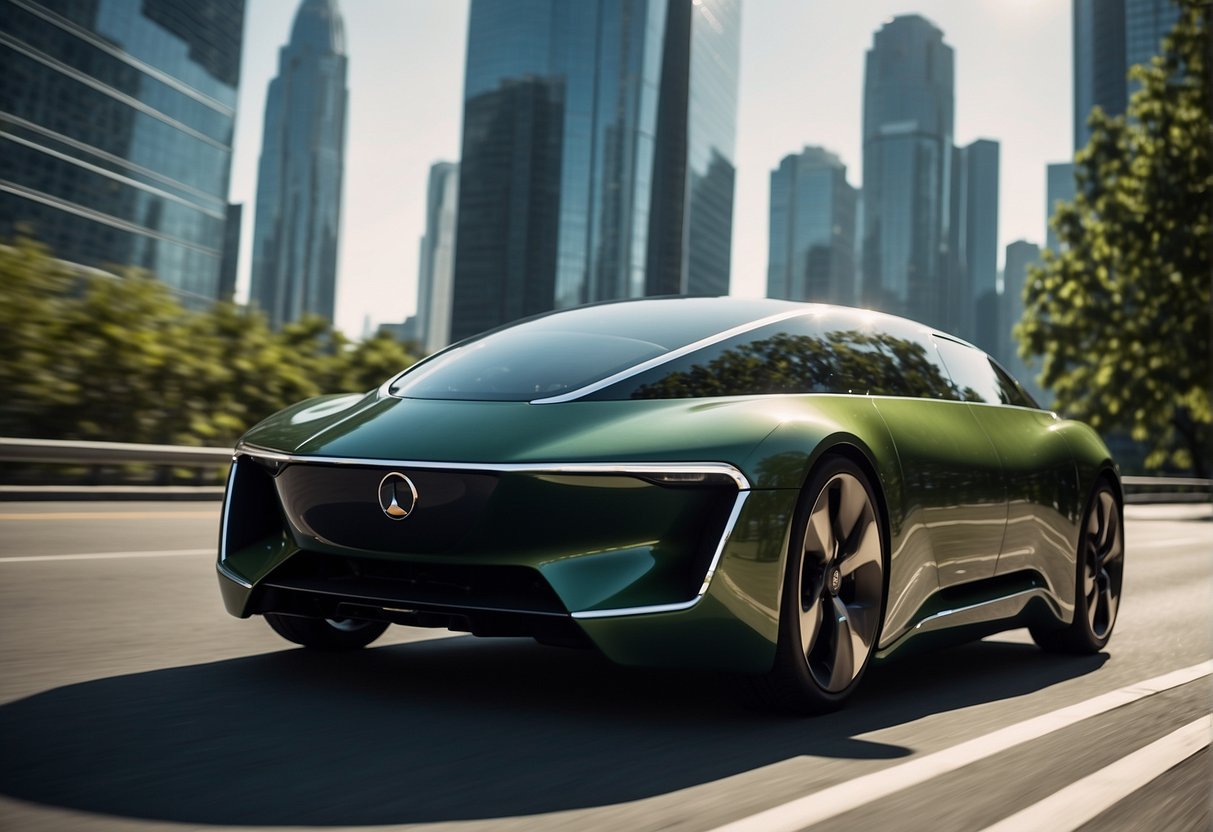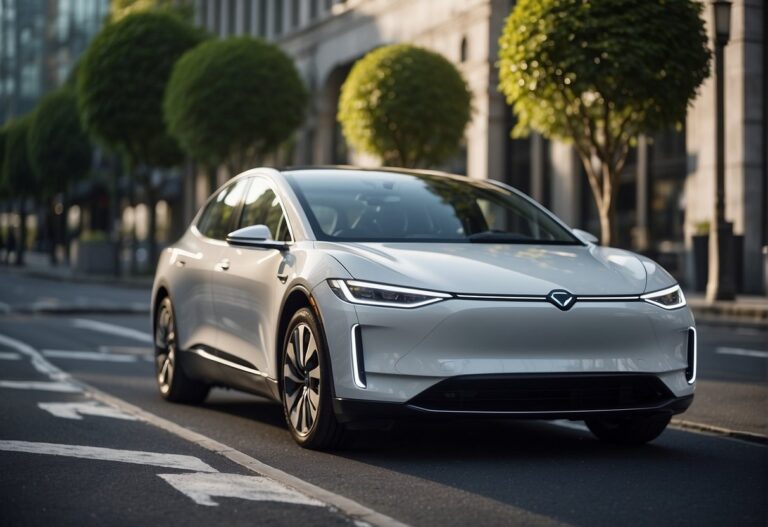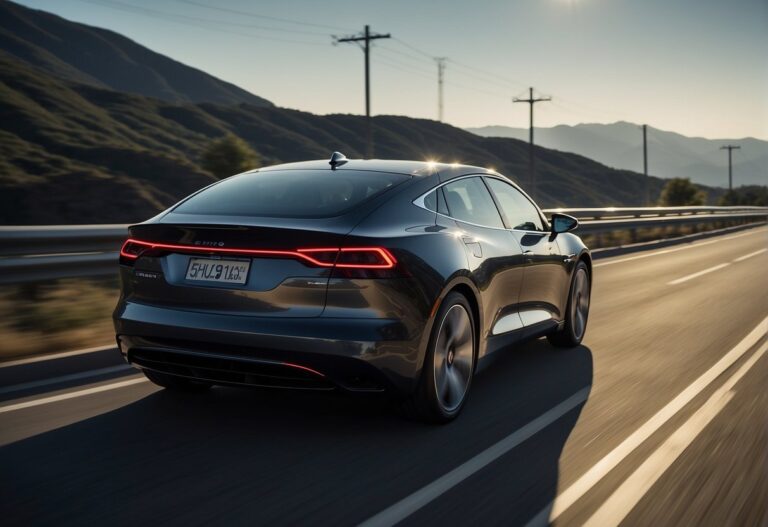Solar-powered electric vehicles (EVs) have been a topic of discussion for decades, but only recently have they started to become more prevalent on the market. As the world continues to move towards more sustainable energy solutions, solar-powered EVs have the potential to play a significant role in the future of transportation.
Solar energy is a renewable resource that has been growing in popularity in recent years. The development of more efficient and affordable solar panels has made it possible for solar energy to become a more viable option for powering various devices, including electric vehicles. Solar panels can be integrated into the design of EVs, allowing them to charge while driving or parked in the sun.
The future of solar-powered EVs is promising, with many companies investing in the technology. Some companies are already producing solar-powered EVs, and others are working on developing new models. As the technology continues to improve, solar-powered EVs could become a more practical and affordable option for consumers. With the potential to reduce greenhouse gas emissions and dependence on fossil fuels, the future of solar-powered EVs looks bright.
Advancements in Solar-Powered Vehicle Technology
Solar-powered vehicles have come a long way since their inception. Advancements in solar technology have led to the development of innovative solar-powered vehicles that are more efficient and offer better performance. This section will discuss the evolution of solar cells and panels, innovative solar-powered vehicles on the market, and the efficiency and performance of solar EVs.
Evolution of Solar Cells and Panels
Solar cells and panels have been around for decades, but recent advancements have made them more efficient and cost-effective. The development of photovoltaic cells has allowed solar panels to generate more electricity from the same amount of sunlight. This has led to the development of more efficient solar-powered vehicles that can travel longer distances on a single charge.
Innovative Solar-Powered Vehicles on the Market
Several innovative solar-powered vehicles are currently on the market. A few notable examples include the Aptera, Lightyear One, and Sion. The Aptera is a three-wheeled solar car that can travel up to 1,000 miles on a single charge. The Lightyear One is a four-wheeled solar car that can travel up to 725 kilometers on a single charge. The Sion is a five-door hatchback that is covered in solar panels and can travel up to 255 kilometers on a single charge.
Efficiency and Performance of Solar EVs
The efficiency and performance of solar EVs have improved significantly in recent years. Solar-powered vehicles can now travel longer distances on a single charge and offer better performance than ever before. The efficiency of solar panels has also improved, allowing solar EVs to generate more electricity from the same amount of sunlight. This has led to a reduction in the cost of solar EVs, making them more affordable for consumers.
In conclusion, advancements in solar-powered vehicle technology have led to the development of more efficient and cost-effective solar EVs. The evolution of solar cells and panels, innovative solar-powered vehicles on the market, and the efficiency and performance of solar EVs have all contributed to the growth of the solar EV industry. As technology continues to improve, we can expect to see even more innovative and efficient solar-powered vehicles in the future.
Challenges and Opportunities for Solar EVs
Economic and Funding Aspects
The development of solar-powered electric vehicles (EVs) faces several economic and funding challenges. The initial cost of producing solar cells and battery storage systems is high, and the overall cost of solar-powered EVs is still higher than traditional gasoline-powered vehicles. However, with advancements in technology and economies of scale, the cost of producing solar cells and battery storage systems is expected to decrease in the future, making solar-powered EVs more affordable.
Furthermore, funding is essential to support the research and development of solar-powered EVs. Governments and private investors need to invest in sustainable technology to promote clean mobility and reduce emissions. The bankruptcy of some companies in the EV industry has also highlighted the importance of proper funding and financial planning.
Environmental Impact and Climate Change
Solar-powered EVs offer a sustainable transportation alternative that can help combat climate change and reduce the environmental impact of transportation. By replacing fossil fuels with renewables, solar-powered EVs can significantly reduce greenhouse gas emissions and improve air quality.
However, the environmental benefits of solar-powered EVs depend on the energy system that powers them. If the electricity used to charge the EVs comes from coal-fired power plants, the environmental benefits are limited. Therefore, it is essential to develop renewable energy systems, such as photovoltaics, that can power solar-powered EVs.
Infrastructure and Energy Systems
The infrastructure and energy systems required to support solar-powered EVs are still underdeveloped. The availability of charging stations and the capacity of the electricity grid are significant challenges that need to be addressed. Developing scalable solar electric vehicles and energy storage systems can help overcome these challenges.
Distributed generation, such as photovoltaics, can also play a crucial role in providing renewable energy for charging stations. Energy storage systems, such as batteries, can help store excess energy generated by photovoltaics and provide power when there is no sunlight.
In conclusion, solar-powered EVs offer a promising sustainable transportation alternative that can help combat climate change and reduce the environmental impact of transportation. However, the development of solar-powered EVs faces several challenges related to economic and funding aspects, environmental impact and climate change, and infrastructure and energy systems.
Frequently Asked Questions
What are the primary disadvantages of solar-powered vehicles?
One of the primary disadvantages of solar-powered vehicles is their limited range. Solar-powered vehicles can only travel a certain distance before they need to be recharged. Another disadvantage is that solar panels are not as efficient in low light conditions, which can limit their usefulness in certain regions or weather conditions.
How do solar-powered cars impact the environment compared to traditional vehicles?
Solar-powered cars have a much smaller environmental impact than traditional vehicles. They do not emit any pollutants or greenhouse gases, making them a much cleaner and more sustainable transportation option. Additionally, solar-powered cars can be charged using renewable energy sources such as solar or wind power, further reducing their environmental impact.
What are the current options for solar-powered cars available for sale?
There are currently a few options for solar-powered cars available for sale, including the Aptera, Lightyear, and Sono Sion. These vehicles use solar panels to charge their batteries and can travel for varying distances on a single charge.
Can you explain the basic working principle of solar-powered vehicles?
Solar-powered vehicles use solar panels to convert sunlight into electricity, which is then stored in a battery. The battery powers an electric motor, which drives the vehicle’s wheels. The more sunlight that hits the solar panels, the more electricity is generated, allowing the vehicle to travel further.
What are the main technological challenges facing the development of solar-powered cars?
One of the main technological challenges facing the development of solar-powered cars is improving the efficiency of solar panels. Current solar panels are not as efficient as they could be, which limits the range and speed of solar-powered vehicles. Additionally, the weight and size of solar panels can be a challenge, as they can add significant weight to the vehicle and take up valuable space.
How feasible is the widespread adoption of solar-powered electric vehicles in the near future?
While solar-powered electric vehicles have a lot of potential, widespread adoption in the near future is unlikely. Solar-powered vehicles are still relatively expensive compared to traditional vehicles, and the technology is not yet advanced enough to compete with traditional vehicles in terms of range and speed. However, as technology improves and prices come down, it is possible that solar-powered vehicles will become more widely adopted in the future.



